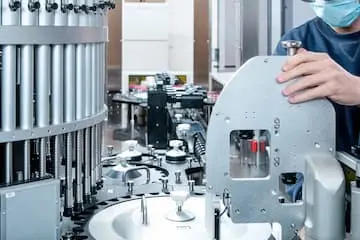Vacuum induction furnaces are essential in industries requiring high-purity metal melting and alloy production. Our range includes the Vacuum Induction Melting Furnace, ideal for aerospace and electronic applications, and the Vacuum Levitation Melting Furnace, perfect for high melting point metals. For research, the Vacuum Melt Spinning System is designed for metastable materials. Additionally, our Vacuum Arc Furnace excels in melting refractory metals, while the 600T Vacuum Induction Hot Press Furnace is tailored for high-temperature sintering. Each product ensures precise temperature control, contamination-free processing, and superior material quality.
Toggle Categories
Get Instant Support
Choose your preferred way to connect with our team
-
Get Free Quote Fill out form for detailed pricing
-
Send Email Detailed inquiry support
-
WhatsApp Quick mobile chat
Response Time
Within 8 hours on working days, 24 hours on holidays
vacuum induction furnace

Lab-Scale Vacuum Induction Melting Furnace
Item Number : KT-VI

Vacuum Heat Treat and Molybdenum Wire Sintering Furnace for Vacuum Sintering
Item Number : KT-VMW

Vacuum Induction Melting Spinning System Arc Melting Furnace
Item Number : KT-VIS

Vacuum Arc Induction Melting Furnace
Item Number : KT-VA
Detailed Overview of Vacuum Induction Furnaces
Vacuum induction furnaces are at the forefront of modern metallurgy, offering unparalleled precision and purity in metal melting processes. These furnaces operate under a vacuum environment, which eliminates the presence of oxygen and other reactive gases, ensuring that the metals remain uncontaminated and of the highest quality. This is particularly crucial for industries such as aerospace, nuclear energy, and electronics, where material integrity is paramount.
Key Features and Benefits
-
High Purity Melting: The vacuum environment prevents oxidation and contamination, resulting in metals and alloys with exceptional purity. This is vital for applications requiring high-performance materials, such as in the aerospace and defense industries.
-
Precise Temperature Control: Advanced induction heating technology allows for precise control over the melting process, ensuring uniform temperature distribution and consistent material properties.
-
Versatility: Our vacuum induction furnaces are capable of melting a wide range of metals and alloys, including nickel-based, cobalt-based, and iron-based high-temperature alloys, stainless steel, tool steel, and more.
-
Environmental Benefits: The vacuum process eliminates the need for chemical deoxidizers, reducing environmental impact and enhancing workplace safety.
-
Customizable Solutions: We offer tailored furnace designs to meet specific industrial requirements, whether for research, production, or specialized applications.
Applications
- Aerospace and Defense: Producing high-strength, lightweight alloys for aircraft and missile components.
- Nuclear Energy: Melting and refining metals for reactor components and fuel rods.
- Electronics: Creating high-purity materials for semiconductors and electronic devices.
- Research and Development: Developing new alloys and materials with unique properties for various industrial applications.
Why Choose Our Vacuum Induction Furnaces?
Our vacuum induction furnaces are engineered with cutting-edge technology to deliver superior performance and reliability. With a focus on innovation and quality, we provide solutions that meet the stringent demands of modern industry. Our team of experts is dedicated to supporting you through every step, from initial consultation to installation and beyond.
Contact us today to learn more about how our vacuum induction furnaces can enhance your production processes. Leave a message to discuss your specific needs and discover the perfect solution for your application.
FAQ
What Is A Vacuum Induction Furnace And How Does It Work?
What Are The Main Applications Of Vacuum Induction Furnaces?
What Are The Advantages Of Using A Vacuum Induction Furnace?
What Types Of Materials Can Be Processed In A Vacuum Induction Furnace?
How Does The Vacuum Environment In A Vacuum Induction Furnace Improve Material Properties?
REQUEST A QUOTE
Our professional team will reply to you within one business day. Please feel free to contact us!
Related Articles

The Architecture of Nothingness: Mastering Heat in a Vacuum
Heat transforms materials, but air corrupts them. Discover how vacuum furnaces utilize low-pressure environments to ensure purity in brazing and sintering.

The Geometry of Heat: Deciding Between Capacity and Control in Lab Furnaces
Choosing between a muffle furnace and a tube furnace isn't just about temperature—it is a choice between sample volume and atmospheric precision.

Why Your Brazed Joints Keep Failing: The Invisible Saboteur in Your Furnace
Struggling with inconsistent brazed joints? Discover the invisible culprit in your furnace—the atmosphere—and learn how to fix it for good.

The Architecture of Heat: Aligning Engineering Precision with Laboratory Reality
Choosing a tube furnace is not about finding the "best" model, but matching specifications—temperature, zones, and atmosphere—to your scientific reality.

The Silent Saboteur in Your Furnace: Why Your Heat Treatment Fails and How to Fix It
Tired of inconsistent heat treatment results? Discover the real reason your parts fail and learn how to gain control by mastering your furnace atmosphere.

Why Your High-Temperature Processes Fail: The Hidden Enemy in Your Vacuum Furnace
Frustrated by inconsistent vacuum furnace results? Discover the real cause of failures and how to fix it by ensuring true vacuum integrity.

Inconsistent Melts? The Problem Isn't Your Furnace, It's the Physics.
Struggling with inconsistent alloy quality and high costs? Discover the hidden reason and learn how to choose the right furnace for perfect results.

The Art of Nothingness: Vacuum, Inert Gas, and the Pursuit of Purity
Vacuum vs. inert gas furnaces: Understand the trade-offs between absolute purity and cost-effective protection in laboratory heat treatment.

Why Your High-Temperature Furnace Failed—And How to Prevent It From Happening Again
Discover the hidden reason behind premature furnace failure. It's not poor quality, but a critical chemistry mismatch. Learn how to choose the right furnace.

Why Your High-Temperature Furnace Fails—And How to Choose the Right One
Is your high-temp furnace causing delays and costly repairs? Learn why focusing on workflow, not just temperature, is the key to choosing the right one.

The Inverted Cup: When Physics Hides a Lethal Trap in Vacuum Furnaces
Hot argon behaves counter-intuitively in bottom-loading furnaces. Discover the physics of the "inverted cup" effect and how to prevent silent asphyxiation.

Your Induction Furnace Is Failing You. The Reason Isn't What You Think.
Struggling with inconsistent melts or high costs? The problem may be a fundamental mismatch in your induction furnace type. Learn to fix it.

The Geometry of Control: Why the Tube Furnace Remains Indispensable
Precision heat treatment meets atmospheric control. Discover how tube furnaces master sintering, annealing, and CVD by eliminating variables.

Why Your Induction Furnace Fails with Aluminum—And How to Fix It for Good
Struggling to melt aluminum? Discover the hidden physics behind inconsistent results and learn how the right high-frequency induction furnace solves it.

The Breakthrough in a Box: How Vacuum Tube Furnaces Eliminate Contamination in Materials Research
Frustrated by oxidation ruining your high-temperature experiments? Discover how the vacuum tube furnace creates a perfect, contamination-free environment, enabling breakthroughs.

Furnace Contamination: The Hidden Saboteur Ruining Your High-Value Parts
Discover why your heat-treating process fails on high-value parts. The issue isn't your settings—it's hidden furnace contamination. Learn the fix.

Why Do Your Nickel Alloys Discolor? The Four Hidden Culprits in Your Furnace and How to Defeat Them
Discover the four main causes of nickel-based alloy discoloration during heat treatment and learn how the right lab equipment can ensure flawless results.

AI completes muffle furnace scientific research graphing in one minute.
How to use nano banana to create scientific illustrations

Risk-Proof Your Lab: How to Choose a Vacuum Pump That Avoids Costly Failures
Learn how to choose reliable lab vacuum pumps to avoid costly failures. Assess chemical risks, throughput needs & safety for optimal performance.

How to Choose and Optimize Water Circulating Vacuum Pumps for Your Lab
Learn how to choose and optimize water circulating vacuum pumps for lab applications, balancing efficiency and reliability.
